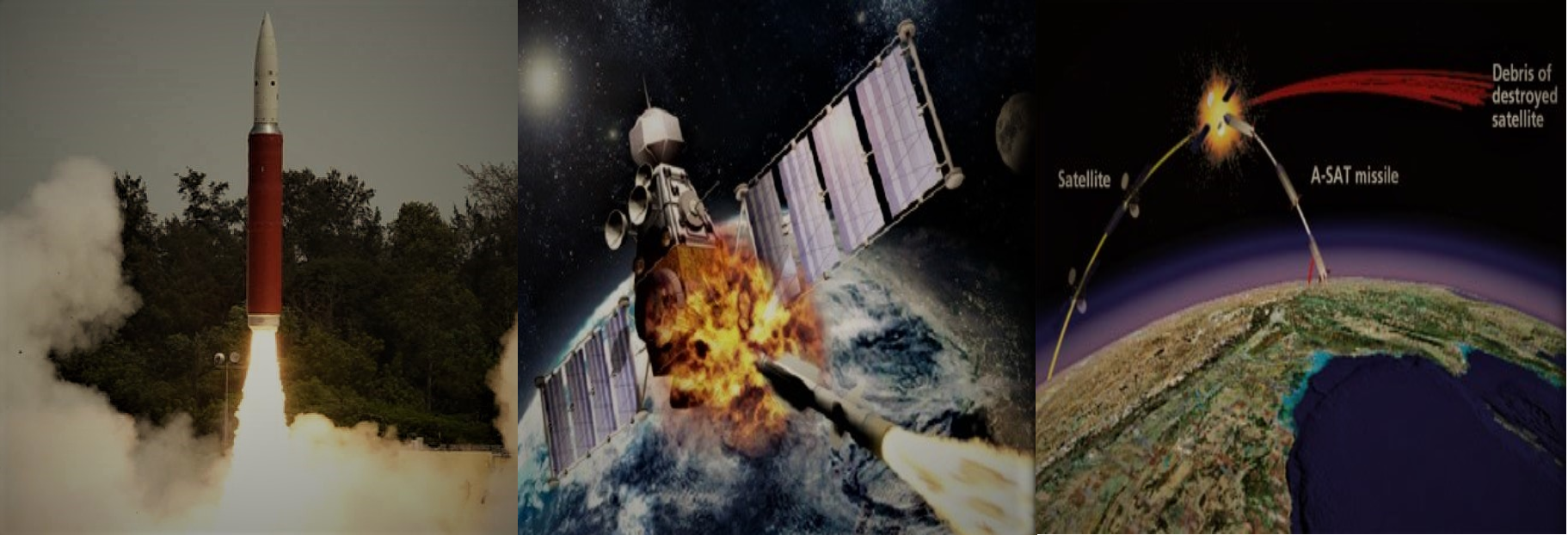THE MISSION SHAKTI SUCCESSFUL.
MISSION SHAKTI, the Defence Research and Development Organisation’s anti-satellite missile, or ASAT, has shot down a low-orbital satellite.The Indian satellite destroyed in the mission was MICRO-R,an imaging satellite was launched into orbit on 24 January 2019,using Polar Satellite Launch Vehicle.
 The Mission is special for two reasons.First India joined the United States, China and Russia to successfully demonstrate its capabilities to shoot down a low-orbital satellite with an ASAT.Second the effort is indigenous.
The Mission is special for two reasons.First India joined the United States, China and Russia to successfully demonstrate its capabilities to shoot down a low-orbital satellite with an ASAT.Second the effort is indigenous.
 Anti-satellite or ASAT missiles are space weapons designed to incapacitate or destroy satellites for strategic military purposes.The DRDO’s BALLISTIC MISSILE DEFENCE INTERCEPTOR was used as an interceptor. Some of the ASAT missiles were tested by China, USA and Russia in the years 2007 (SC-19 ASAT missile), 2008 (RIM-161 Standard Missile 3 ABM), and 2015 (PL-19 Nudol).
Anti-satellite or ASAT missiles are space weapons designed to incapacitate or destroy satellites for strategic military purposes.The DRDO’s BALLISTIC MISSILE DEFENCE INTERCEPTOR was used as an interceptor. Some of the ASAT missiles were tested by China, USA and Russia in the years 2007 (SC-19 ASAT missile), 2008 (RIM-161 Standard Missile 3 ABM), and 2015 (PL-19 Nudol).
There are various methods to demonstrate the ASAT capabilities are Jamming,Fly-By-Test and Kinetic Kill.India followed the Kinetic Kill technique.India tested this missile in low earth orbit (LEO). Most of the military satellites orbit up to 2,000 km above the earth’s surface on LEO.The other reason to conduct the test in lower orbit was that there will be no space debris and if debris is generated it will decay and fall back onto the earth within weeks.
India’s space programme is growing rapidly.After the success of Mission Mars i.e MANGALYAAN.The Government has sanctioned the mission GAGANYAAN,that will take Indians to the outer space.India has undertaken 102 spacecraft missions consisting of communication satellites, earth observation satellites, experimental satellites, navigation satellites, apart from satellites meant for scientific research and exploration, academic studies and other small satellites. India’s space programme is a critical backbone of India’s security, economic and social infrastructure.
India is a party to all the major international treaties relating to outer space. India already implements a number of Transparency and Confidence Building Measures (TCBMs)—including registering space objects with the UN register; pre-launch notifications; measures in harmony with the UN Space Mitigation Guidelines; participation in Inter Agency Space Debris Coordination (IADC) activities with regard to space debris management; undertaking SOPA (Space Object Proximity Awareness and COLA (Collision Avoidance) Analysis—and numerous international cooperation activities, including hosting the UN affiliated Centre for Space and Science Technology Education in Asia and Pacific. India has been participating in all sessions of the UN Committee on the Peaceful Uses of Outer Space.
India supported UNGA resolution 69/32 on No First Placement of Weapons on Outer Space. We see the No First Placement of weapons in outer space as only an interim step and not a substitute for concluding substantive legal measures to ensure the prevention of an arms race in outer space, which should continue to be a priority for the international community.
India supports the substantive consideration of the issue of Prevention of an Arms Race in Outer Space (PAROS) in the Conference on Disarmament where it has been on the agenda since 1982.
The principal international Treaty on space is the 1967 Outer Space Treaty. India is a signatory to this treaty, and ratified it in 1982. The Outer Space Treaty prohibits only weapons of mass destruction in outer space, not ordinary weapons.India expects to play a role in the future in the drafting of international law on prevention of an arms race in outer space including inter alia on the prevention of the placement of weapons in outer space in its capacity as a major space faring nation with proven space technology. India is not in violation of any international law or Treaty to which it is a party or any national obligation.






